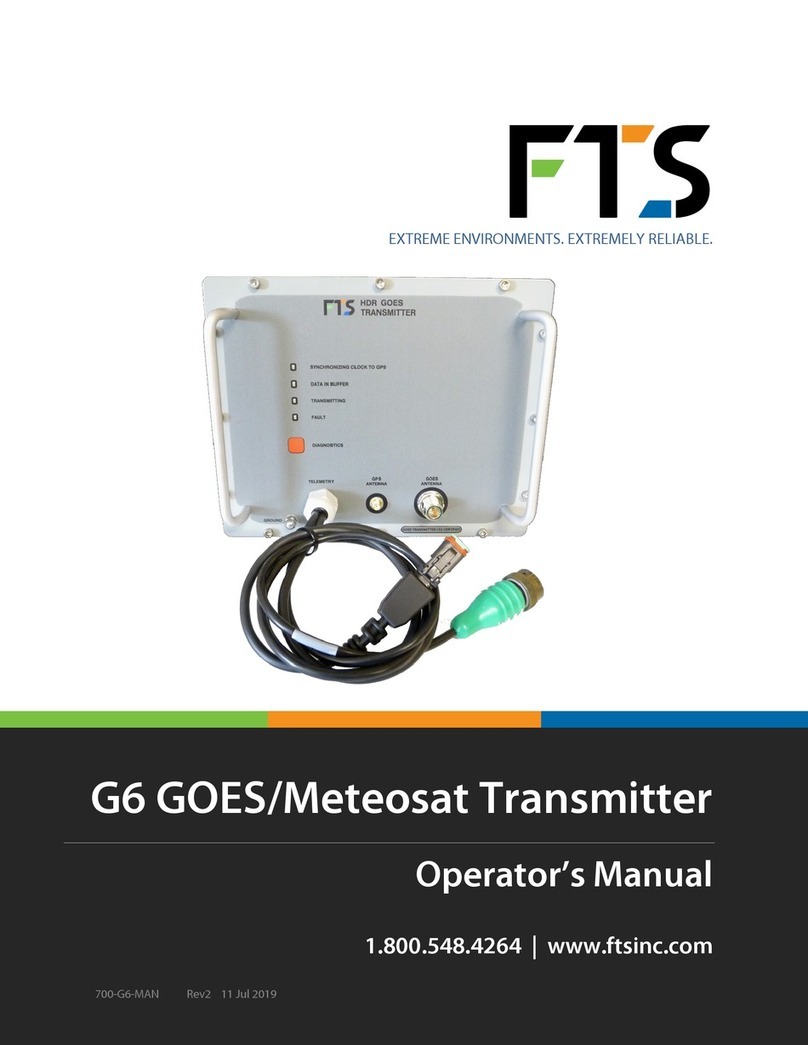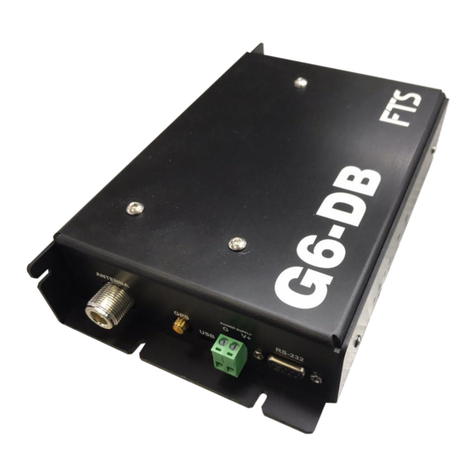
700-G6-PM-MET1–Man Rev 1 13 Jun 2022 5/29
Part #21455
synchronization is complete. Once the transmitter time is synchronized, it will be able to transmit on the
specified time schedule.
If the GPs antenna is not connected the synchronization light will illuminate for two seconds and then turn
off for a minute and a half. Check your antenna connections. It will continue this cycle until it detects a GPS
antenna.
IMPORTANT! Ensure you take at least two minutes to observe the Synchronize Clock to GPS
indicator once it turns off, to verify that it has synchronized. If the light remains off,
synchronization has been achieved. If it blinks and then turns off again, it does not detect an
antenna and you must check your connections and equipment.
Note that the first GPS fix after power up will normally be acquired within five minutes;
however, UTC time synchronization can take as long as 20 minutes. If the transmitter cannot
synchronize to UTC time during the first 20 minutes, the transmitter will switch off the GPS
module for one minute and then will restart the synchronization cycle. This process
continues until the transmitter successfully synchronizes to UTC time.
After initial time synchronization, the transmitter will attempt a single resynchronization to UTC time every
24 hours to correct its time drift. The transmitter is capable of operating for 28 days without a time
resynchronization. After 28 days, if a time resynchronization is not achieved, the transmitter will disable
transmissions. However, it will continue to attempt time resynchronization and, if successful, will re-enable
transmissions.
The most common reason for time resynchronization failure is because the GPS antenna is being blocked by
snow. If transmissions do not recommence with expected snow melt, or snow blockage is an unlikely
reason, contact FTS Support.
2.6.5 DATA indicator
The DATA indicator shows that the transmitter has acquired data from the particulate monitor and has
stored that data in the transmitter’s data buffer. The DATA indicator should be illuminated from
approximately 2 minutes past the sensor interval (when the particulate monitor is read) until one minute
prior to transmission time (when the transmitter empties and formats the buffer contents in preparation for
transmission). The light will remain illuminated if the sensor is read within the time frame prior to
transmission. Any data received within 1 minute of data transmission or during a timed transmission, will
not be included in the current transmission but will be buffered for the next interval.
2.6.6 TRANSMIT (TX) Indicator
The TX indicator will illuminate at transmission time for the duration of the data transmission (about three
seconds in total); however, if there is a failsafe error the FAULT indicator will blink twice to show that failsafe
has been tripped and the transmitter has been switched off.





























